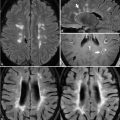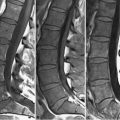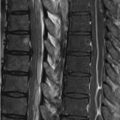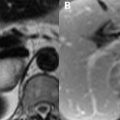68 Biliary Disease Magnetic resonance cholangiopancreatography (MRCP) clearly depicts high SI static biliary fluid, which has a long T2 time, against surrounding structures of low SI on images acquired with long echo times. Typically, a series of conventional T1WI and T2WI are acquired in various planes followed by thick slab (4–5 mm), single-shot 2D acquisitions with long echo times. A 3D scan with isotropic spatial resolution—to allow for reconstruction in any desired plane—is then acquired, typically with navigator echoes to avoid motion artifact. MIP images are then constructed. Contrast-enhanced MRCP may also be performed utilizing agents with biliary excretion such as Gd-BOPTA or Gd EOB-DTPA; precontrast T1WI and T2WI allow precise evaluation of surrounding structures. MRCP offers noninvasive imaging comparable to ERCP (endoscopic retrograde cholangiopancreatography) in accuracy without operator dependence or ionizing radiation. The normal gallbladder wall appears as low SI on T2WI and enhances homogeneously. The SI of bile itself increases with fasting on T1WI due to increasing bile salt concentrations. Cholelithiasis is a common incidental finding on MRI. A gallstone appears hypointense on T1WI and T2WI due to a lack of mobile protons within its internal lattice. Stones with high protein concentration may appear hyperintense on T1WI. Multiple low SI gallstones are present on the thick-slab MRCP image of Fig. 68.1A
![]()
Stay updated, free articles. Join our Telegram channel

Full access? Get Clinical Tree








